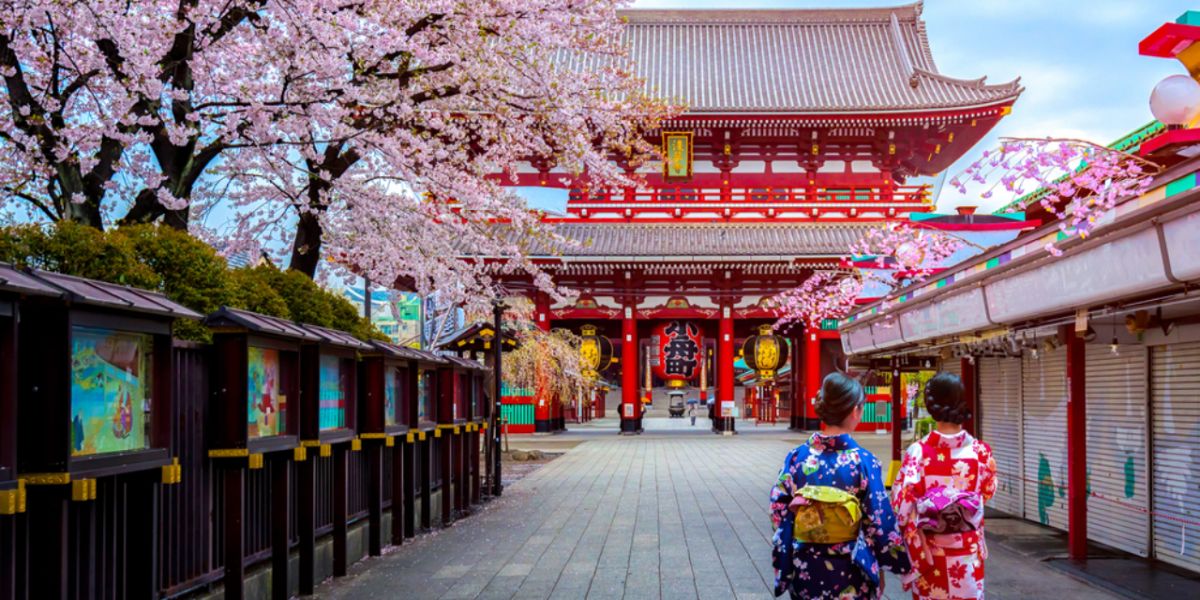
Saying sorry, thank you, addressing a stranger, your boss, or your family, talking, getting around – all these natural things lose some of their natural automatisms when you go abroad, unfortunately. You will need to ensure that you're up to date, especially if you are traveling to a country with a culture that is totally different from yours. How to adapt to the local culture in Tokyo? Here is a guide to the best practices. Of course, we are focusing on Tokyo, but these tips are applicable everywhere in Japan.
Apologies in Tokyo
Japanese is one of the most courteous languages in the world. Politeness is an art in itself. The words used to apologize are also used in other circumstances. Here is a short list and explanation of these nuances.
Sumimasen (すみません)
"Sumimasen" is a formal expression that means "excuse me”, used to apologize, but it can also be used in many other situations in everyday life. "Sumimasen” can be used to start a dialogue, send a message, show respect, gratitude, and politeness, say thank you, and address a superior, an elderly person, or a stranger.
In everyday language, you may hear "suimasen" instead of "sumimasen". This is an easily pronounceable variant of "sumimasen”. You may use this word, when, for example:
- you bump into someone in the street;
- you sneak off the subway, the train, or out of a crowd;
- someone holds the door for you/let you pass;
- you ask for information;
- you approach someone on the street;
- someone is doing you a favor;
- someone is helping you (e.g., finding your way);
- you have made a mistake;
- you call a waiter in a restaurant, a shop employee, etc.
Gomen nasai (ごめんなさい)
It means "forgiveness" and indicates that you have made a mistake. Unlike "sumimasen", you will not use it to address someone in the street or to start a sentence. "Gomen nasai" expresses the wish to be forgiven. It is a colloquial expression used among friends and relatives.
Expressions that derive from "gomen nasai":
- gomen, which means sorry!
- gomen ne: is sorry! with the particle "ne" which can be considered as an appeasing emoticon. Placed at the end of a sentence, "ne" is used to tone down what is being said.
Shitsurei shimasu
The term "shitsurei" means "rudeness". Therefore, the word is used to say "I was rude" like in "Please excuse my rudeness". The expression "shitsurei shimasu" is considered to be polite. It should be used when speaking to a superior. You can also use "shitsurei itashimasu".
Môshiwake gozaimasen (申し訳ございません)
The term literally means "I don't know how to apologize to you" or "My mistake is inexcusable. I am embarrassed". It is a very polite expression to be used only in a professional environment, with your superiors, people who are socially higher than you, or clients. You can also use môshiwake gozaimasen (申し訳ありません). There are even more polite versions:
- "makotoni môshiwake gozaimasen (誠に申し訳ございません)";
- “taihen môshiwake gozaimasen (大変申し訳ございません)”.
Gestures in Tokyo
When one asks for forgiveness or apologizes, they should atone by joining their body language to their words. Usually, a slight bow of the head along with the words would suffice, but the more serious the apology, the more pronounced the bow should be. As for the famous "dogeza", it is almost never used. This expression could be translated as "kneeling down to the ground".
The basic bow is known as "eshaku (会釈)". It is the lightest form of bowing, with the body bent at a 15-degree angle. It is used when you receive feedback such as "Kashikomarimashita (かしこまりました)", "Shitsurei itashimasu (失礼いたします)", or when you are waiting for someone.
The ordinary bow (普通礼 or 敬礼) is used when expressing gratitude, welcoming, or bowing to a superior or client. You bend the body 30 to 35 degrees.
When apologizing, the most respectful bow (最敬礼) is used, with the body bent 45 to 60 degrees (source: Etiquette of bowing).
The concept of honne and tatemae in Tokyo
Honne and tatemae are pillars of social relationships in Japanese culture. "Honne" refers to the true wishes and real intentions of a person, whereas "tatemae" symbolizes the external demeanor of a person in society.
The concept of honne and tatemae is meant to pacify relationships, but it is often misunderstood by some foreigners, especially those with Western culture. Since it caters to different "self-stances" that depend on given social contexts, the honne and tatemae concept cannot be reduced to hypocrisy, as would suggest Western interpretations. Moreover, in all cultures, individuals act differently in society and in private, and this is where this notion becomes relevant.
Far from being opposed to sincerity, the honne and tatemae concept is, in fact, a social convention that aims to regulate human relations. Nevertheless, it should be stressed that, in Japan, these social conventions play a very important role. Establishing a sincere dialogue often takes more time, but of course, it all depends on the individual.
How to say "no" in Japanese
In Japanese, No is said "iie", but you will seldom hear it because it is considered too direct and blunt. In Japanese culture, people prefer to find polite ways to express their refusal.
Chotto (ちょっと...)
"Chotto" means "a little/ a bit". It is also used to decline an invitation, reject a proposal, or refuse something. It is widely used and will be helpful in all situations of everyday life.
Sumimasen (すみません)
In a more formal way, "sumimasen" can have the same meaning as "chotto". It means to refuse in a polite way.
Social norms in Tokyo
On the street
In the streets of Tokyo, people are supposed to walk on the left. This is not a common code in all of Japan. In Osaka, for instance, there is no particular way of walking, but even in Tokyo, the rule is not written in stone. On the street (especially on busy streets), people walk as they please.
At the train stations
Whether in Tokyo, Osaka, or elsewhere in Japan, it is better to follow the right traffic flow, especially during rush hours. Arrows on the ground will show you the way to go.
Be cautious when boarding trains since you may unintentionally enter a women-only carriage if you are not careful.
In Kanto, including Tokyo, the first or last car is usually designated for women, while in Kansai, women-only cars are typically situated closer to the center of the train.
Using escalators
It is common to keep one side of the escalator open in places like commercial facilities, train stations, and crowded areas for those who prefer to walk.
In Kanto, people stand on the left side, while in Kansai, people generally stand on the right side. There are different theories about why this custom exists. One theory suggests that in Kanto, standing on the left side is influenced by the manners of samurai warriors, who wanted to avoid their swords clashing.
On the other hand, in Kansai, standing on the right side is believed to be a result of the practice being spread by major railroad companies and the influence of etiquette at the Osaka World Exposition.
At work
Normally, at work, one is required to be in the proper attire. An employee's basic work outfit is a dark suit, white shirt, and tie. Women have more options; they can wear pastel-colored suits or skirts, but they are also required to wear makeup and high heels. The KuToo movement was born in Japan to challenge this injunction.
Fashion in Japan
Japanese fashion is loose on the street. In Tokyo, young adults show themselves in the trendy districts of Shibuya and Harajuku. Shibuya is the fashion district with the latest trends, and Harajuku is its eccentric pop-rock counterpart.
Extra tips for adjusting to the Japanese culture
Forget your misconceptions, and do not compare everything with what happens in your country. Observe the locals and do as they do. Don't hesitate to ask for help when you don't understand something.
Unsurprisingly, speaking Japanese will make it easier for you to adapt to the culture. It will also show your motivation to integrate. Take classes and study regularly.
Useful links:
Differences between Kanto and Kansai
We do our best to provide accurate and up to date information. However, if you have noticed any inaccuracies in this article, please let us know in the comments section below.








